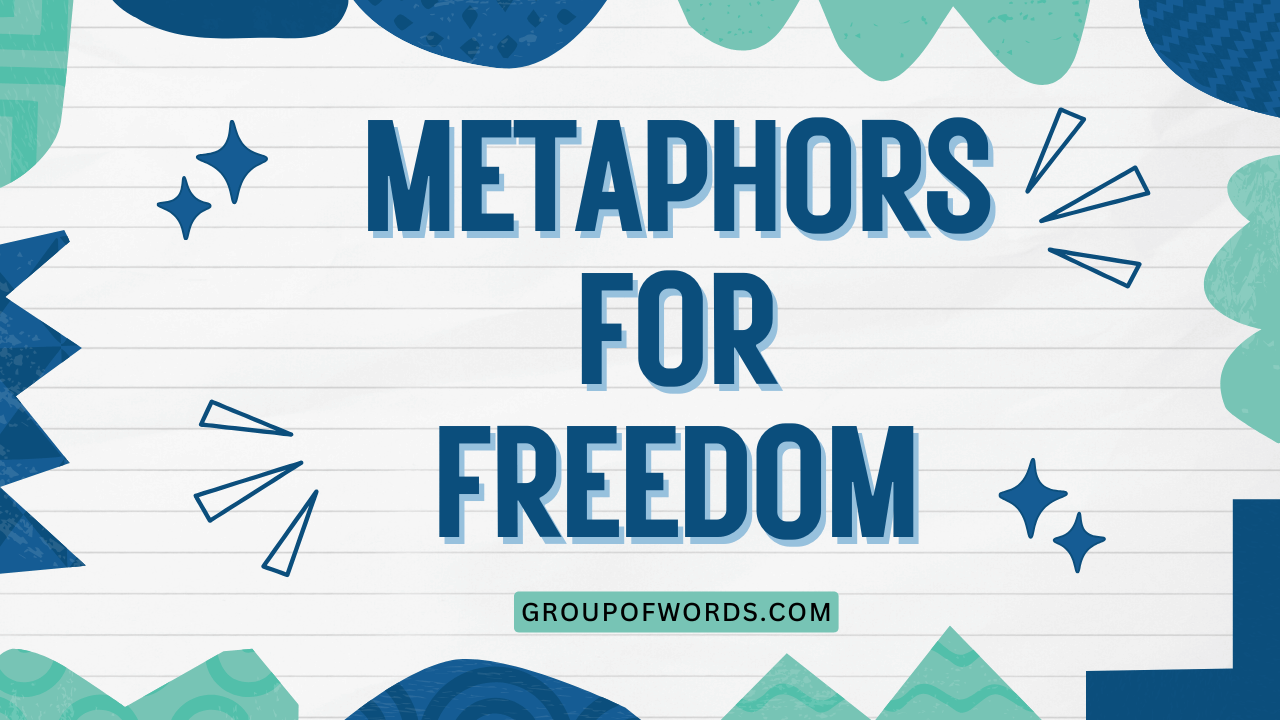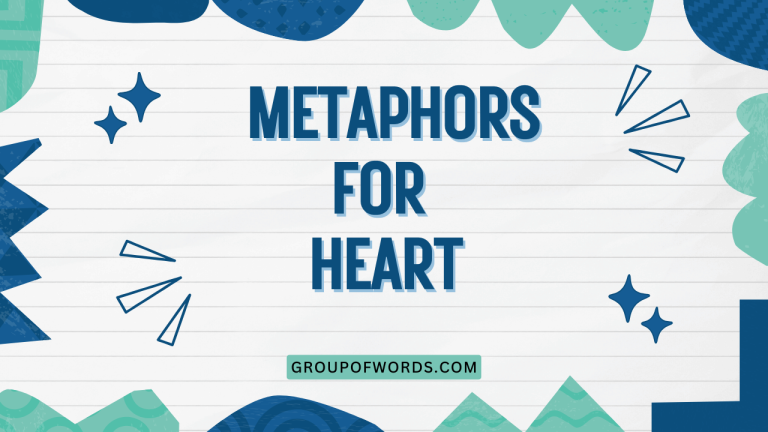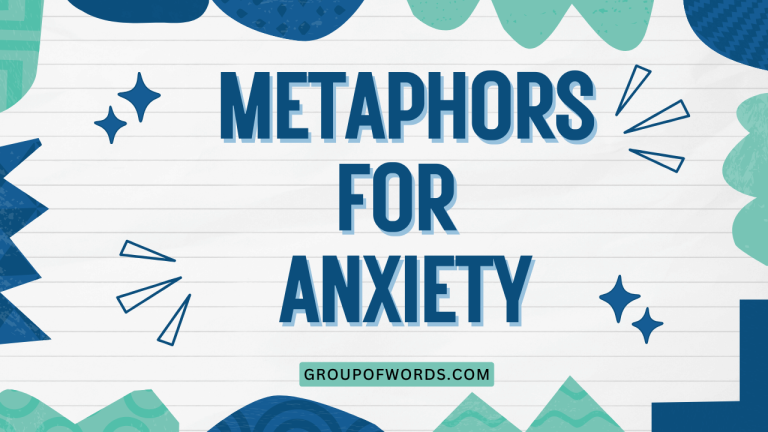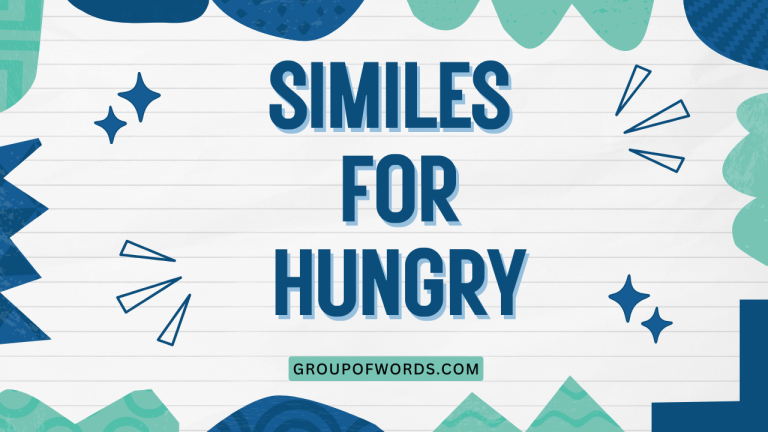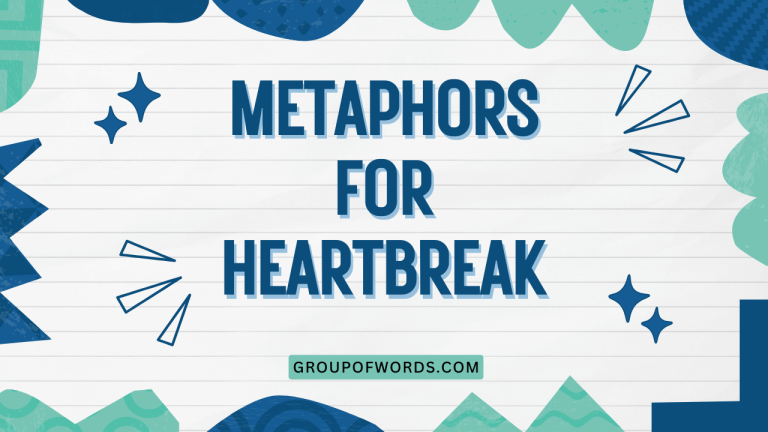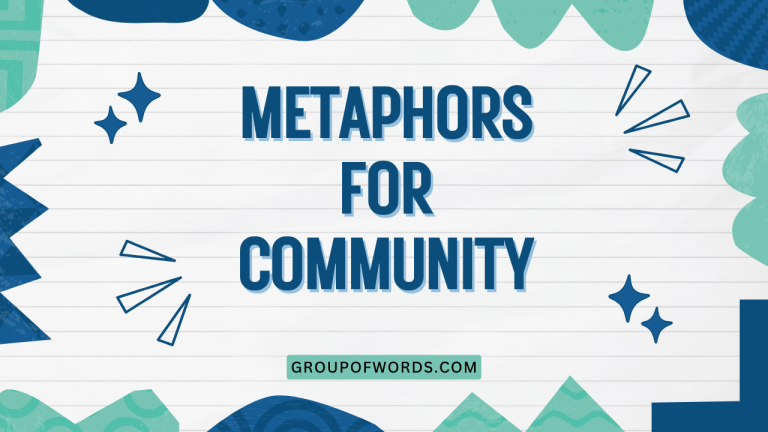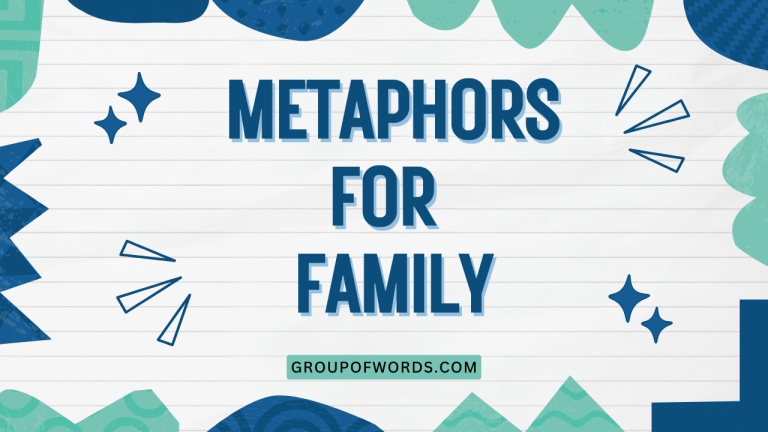Metaphors for Freedom: A Comprehensive Guide
Understanding metaphors for freedom is crucial for grasping the nuances of English language and literature. Freedom, an abstract concept, often finds expression through vivid metaphors that enrich our understanding and evoke powerful emotions.
This article delves into the world of these metaphors, exploring their structure, types, and usage. Whether you’re an English language learner, a literature enthusiast, or simply curious about the power of figurative language, this guide will equip you with the knowledge to identify, interpret, and appreciate metaphors for freedom in all their forms.
This comprehensive guide will benefit students learning English, writers looking to enhance their creative expression, and anyone interested in the art of language. By exploring the various types of metaphors used to describe freedom, we will gain a deeper appreciation for the concept itself and the ways in which language shapes our perception of it.
Table of Contents
- Definition of Metaphors for Freedom
- Structural Breakdown of Freedom Metaphors
- Types and Categories of Freedom Metaphors
- Examples of Freedom Metaphors
- Usage Rules for Freedom Metaphors
- Common Mistakes with Freedom Metaphors
- Practice Exercises
- Advanced Topics in Freedom Metaphors
- Frequently Asked Questions
- Conclusion
Definition of Metaphors for Freedom
A metaphor for freedom is a figure of speech that uses an image, object, or concept to represent the abstract idea of freedom. Instead of directly stating that something is free, a metaphor suggests a resemblance between freedom and something else, creating a more vivid and impactful understanding.
These metaphors leverage our existing knowledge and experiences to illuminate the often-intangible nature of freedom.
Metaphors for freedom function by transferring qualities from the source domain (the image, object, or concept) to the target domain (freedom). This transfer allows us to perceive freedom in a new light, enriching our understanding and emotional connection to the concept.
For example, if freedom is described as a “bird taking flight,” the qualities of lightness, unrestricted movement, and soaring high are transferred to our understanding of freedom.
The contexts in which these metaphors are used are vast and varied. They appear in literature, poetry, political speeches, everyday conversations, and even advertising.
Their purpose is often to persuade, inspire, or simply to convey the emotional weight of freedom. Understanding these contexts is crucial for interpreting the intended meaning and appreciating the power of the metaphor.
Structural Breakdown of Freedom Metaphors
The structure of a freedom metaphor typically involves two key elements: the **source domain** and the **target domain**. The source domain is the concrete image or concept used to represent freedom (e.g., a bird, a river).
The target domain is freedom itself, the abstract concept being described.
The connection between the source and target domains is established through a process called **mapping**. This involves identifying shared qualities or attributes between the two domains.
For example, a bird’s ability to fly without constraints maps onto the idea of freedom from oppression or limitations. The effectiveness of a metaphor depends on how strongly these mappings resonate with the audience.
Consider the metaphor “Freedom is a river.” Here, the source domain is “river” and the target domain is “freedom.” The shared qualities might include flow, movement, and the ability to overcome obstacles. The metaphor suggests that freedom, like a river, is dynamic, unstoppable, and life-giving.
A deeper analysis of the metaphor also considers the **ground**, which refers to the shared attributes that make the metaphor work. In the “Freedom is a river” example, the ground includes characteristics such as continuous movement and the ability to carve its own path.
The stronger the ground, the more effective and meaningful the metaphor becomes.
Types and Categories of Freedom Metaphors
Metaphors for freedom can be categorized based on the source domain they draw upon. Here are some common types:
Nature Metaphors
Nature provides a rich source of metaphors for freedom. Elements like the wind, the ocean, and mountains can all be used to represent the boundless and powerful nature of freedom.
For example, “Freedom is the open sky” suggests limitlessness and vast possibilities. “Freedom is a boundless ocean” implies a sense of vastness and unrestricted exploration.
These metaphors evoke a sense of awe and wonder, emphasizing the expansive nature of freedom.
Bird Metaphors
Birds, with their ability to fly freely through the air, are a classic symbol of freedom. Metaphors involving birds often emphasize the ability to escape constraints and soar to new heights.
“Freedom is a bird taking flight” is a common metaphor that captures the essence of liberation. “Freedom is the eagle soaring over the mountains” suggests strength, independence, and a commanding perspective.
These metaphors often evoke a sense of hope and aspiration.
Flight Metaphors
Closely related to bird metaphors, flight metaphors emphasize the act of flying itself as a symbol of freedom. These metaphors often convey a sense of escape, liberation, and transcendence.
“Freedom is the wind beneath my wings” suggests empowerment and the ability to overcome obstacles. “Freedom is breaking free from the chains and taking flight” vividly depicts the act of liberation.
These metaphors often evoke a sense of exhilaration and triumph.
Light Metaphors
Light is often associated with knowledge, hope, and clarity. Metaphors involving light can represent freedom as a source of enlightenment and liberation from darkness or ignorance.
“Freedom is the light that guides us out of darkness” suggests that freedom provides direction and hope in difficult times. “Freedom is the dawn of a new era” implies a fresh start and the promise of a better future.
These metaphors often evoke a sense of optimism and progress.
Journey Metaphors
Freedom can be seen as a journey, a path that must be traveled to reach a desired destination. These metaphors often emphasize the challenges and rewards of pursuing freedom.
“Freedom is a long and winding road” suggests that the path to freedom may be difficult and require perseverance. “Freedom is the destination at the end of a hard-fought journey” implies that freedom is a valuable reward that must be earned.
These metaphors often evoke a sense of determination and resilience.
Container Metaphors
Container metaphors involve the idea of freedom as something that can be contained or released. These metaphors often emphasize the importance of protecting and preserving freedom.
“Freedom is a fragile vessel that must be guarded” suggests that freedom is vulnerable and requires careful protection. “Freedom is breaking out of the cage” vividly depicts the act of liberation from confinement.
These metaphors often evoke a sense of responsibility and the need for vigilance.
Examples of Freedom Metaphors
The following tables provide numerous examples of freedom metaphors, categorized by type, to illustrate their diverse applications and meanings. Each table contains 20-30 examples.
The first table showcases nature metaphors for freedom, highlighting how elements like the wind, sky, and ocean can represent the boundless and powerful aspects of freedom.
| Nature Metaphor | Explanation |
|---|---|
| Freedom is the open sky. | Freedom is limitless and unrestricted. |
| Freedom is a boundless ocean. | Freedom is vast and offers endless possibilities. |
| Freedom is the wind in my hair. | Freedom is exhilarating and liberating. |
| Freedom is a mountain to climb. | Freedom requires effort and perseverance. |
| Freedom is a flowing river. | Freedom is dynamic and unstoppable. |
| Freedom is the sun shining after a storm. | Freedom is hope and renewal after hardship. |
| Freedom is the vast desert. | Freedom is a blank canvas, full of potential. |
| Freedom is the deep forest. | Freedom is an exploration of the unknown. |
| Freedom is the starry night. | Freedom inspires wonder and awe. |
| Freedom is the untamed wilderness. | Freedom is raw and untamed, requiring respect. |
| Freedom is the gentle breeze. | Freedom is subtle yet powerful. |
| Freedom is the fertile earth. | Freedom allows growth and prosperity. |
| Freedom is the roaring waterfall. | Freedom is a powerful and overwhelming force. |
| Freedom is the quiet meadow. | Freedom is peaceful and serene. |
| Freedom is the changing seasons. | Freedom is a cycle of growth and renewal. |
| Freedom is the vast plains. | Freedom offers endless opportunities. |
| Freedom is the towering redwood. | Freedom is strong, enduring, and resilient. |
| Freedom is the crystal-clear lake. | Freedom is transparent and honest. |
| Freedom is the distant horizon. | Freedom is a goal to strive for. |
| Freedom is the whispering leaves. | Freedom is a constant reminder of nature’s beauty. |
| Freedom is the blooming flower. | Freedom represents new beginnings and potential. |
| Freedom is the expansive sky at dawn. | Freedom is a fresh start with endless possibilities. |
| Freedom is the calm before the storm. | Freedom is a moment of peace before challenges arise. |
The second table explores bird and flight metaphors for freedom, focusing on the imagery of soaring, liberation, and escape from constraints.
| Bird/Flight Metaphor | Explanation |
|---|---|
| Freedom is a bird taking flight. | Freedom is the act of liberation and escape. |
| Freedom is the eagle soaring over the mountains. | Freedom is strength, independence, and perspective. |
| Freedom is the wind beneath my wings. | Freedom empowers and supports. |
| Freedom is breaking free from the chains and taking flight. | Freedom is the act of liberation from oppression. |
| Freedom is a soaring spirit. | Freedom is the uplifting feeling of liberation. |
| Freedom is the dove released into the sky. | Freedom is peace and hope. |
| Freedom is the airplane taking off. | Freedom is the beginning of a new journey. |
| Freedom is the hot air balloon rising above the clouds. | Freedom is a unique perspective and a sense of elevation. |
| Freedom is the unfettered wings of imagination. | Freedom allows boundless creativity. |
| Freedom is the kite dancing in the wind. | Freedom is playful and unrestricted. |
| Freedom is the parachute jump. | Freedom is a leap of faith. |
| Freedom is the open sky where birds roam. | Freedom is a natural state of unrestricted movement. |
| Freedom is the hummingbird flitting through the garden. | Freedom is delicate and precious. |
| Freedom is the falcon’s dive. | Freedom is focused and purposeful. |
| Freedom is the albatross gliding over the ocean. | Freedom is enduring and resilient. |
| Freedom is the swift’s flight through the canyon. | Freedom is swift and unyielding. |
| Freedom is the hawk circling above. | Freedom is watchful and protective. |
| Freedom is the wild goose flying south for the winter. | Freedom is natural and instinctive. |
| Freedom is the butterfly emerging from its chrysalis. | Freedom is transformation and rebirth. |
| Freedom is the skydiving experience. | Freedom is an exhilarating and daring adventure. |
| Freedom is the unburdened flight of a dandelion seed. | Freedom is light, effortless, and widespread. |
| Freedom is the soaring of the human spirit. | Freedom is the uplifting and expansive feeling of liberation. |
The third table illustrates light metaphors for freedom, emphasizing its role as a source of enlightenment, hope, and clarity in overcoming darkness or ignorance.
| Light Metaphor | Explanation |
|---|---|
| Freedom is the light that guides us out of darkness. | Freedom provides direction and hope. |
| Freedom is the dawn of a new era. | Freedom is a fresh start and a better future. |
| Freedom is a beacon of hope. | Freedom inspires and encourages. |
| Freedom is a ray of sunshine. | Freedom is warmth and happiness. |
| Freedom is the spark of inspiration. | Freedom ignites creativity and innovation. |
| Freedom is a guiding star. | Freedom provides direction and purpose. |
| Freedom is the light at the end of the tunnel. | Freedom is the hope for a positive outcome after hardship. |
| Freedom is the illumination of truth. | Freedom reveals the truth and dispels ignorance. |
| Freedom is the warmth of the sun. | Freedom is comforting and nurturing. |
| Freedom is the candle in the darkness. | Freedom is a small but powerful source of hope. |
| Freedom is the clarity of vision. | Freedom provides a clear understanding. |
| Freedom is the lamp of knowledge. | Freedom is enlightenment through education. |
| Freedom is the sunlight breaking through the clouds. | Freedom is hope emerging after difficulty. |
| Freedom is the glow of understanding. | Freedom brings comprehension and insight. |
| Freedom is the shimmering light on the water. | Freedom is beautiful and captivating. |
| Freedom is the inner light. | Freedom is self-awareness and empowerment. |
| Freedom is the radiant dawn. | Freedom is a new beginning, bright and promising. |
| Freedom is the fire of passion. | Freedom ignites enthusiasm and drive. |
| Freedom is the glow of self-expression. | Freedom allows authentic communication and creativity. |
| Freedom is the brilliance of an open mind. | Freedom allows for intellectual growth and discovery. |
| Freedom is the sun rising on a new day. | Freedom is a fresh perspective and renewed hope. |
| Freedom is the spark that ignites change. | Freedom initiates progress and transformation. |
The fourth table focuses on journey metaphors for freedom, highlighting the path to liberation, the challenges faced, and the rewards gained along the way.
| Journey Metaphor | Explanation |
|---|---|
| Freedom is a long and winding road. | Freedom is a difficult and challenging path. |
| Freedom is the destination at the end of a hard-fought journey. | Freedom is a valuable reward that must be earned. |
| Freedom is the path to self-discovery. | Freedom allows for personal growth and understanding. |
| Freedom is the pilgrimage to truth. | Freedom is a quest for knowledge and understanding. |
| Freedom is the climb to the summit of achievement. | Freedom requires effort and determination to reach goals. |
| Freedom is the voyage across uncharted waters. | Freedom is exploring new and unknown territories. |
| Freedom is the trek through the wilderness. | Freedom is a challenging journey through difficult circumstances. |
| Freedom is the race towards equality. | Freedom is a pursuit of fairness and justice. |
| Freedom is the dance of life. | Freedom is a rhythmic and dynamic journey. |
| Freedom is the hike up the mountain of opportunity. | Freedom is a challenging but rewarding climb towards success. |
| Freedom is the exploration of the inner self. | Freedom is a personal journey of self-discovery and understanding. |
| Freedom is the quest for justice. | Freedom is an ongoing pursuit of fairness and equity. |
| Freedom is the journey of a thousand miles. | Freedom requires patience and perseverance over time. |
| Freedom is the road less traveled. | Freedom is choosing a path that is unique and independent. |
| Freedom is the voyage of discovery. | Freedom is exploring new ideas and possibilities. |
| Freedom is the path to enlightenment. | Freedom is a journey towards knowledge and understanding. |
| Freedom is the climb to self-mastery. | Freedom requires discipline and self-control. |
| Freedom is the exploration of boundaries. | Freedom is pushing limits and discovering new possibilities. |
| Freedom is the journey of a lifetime. | Freedom is an ongoing process of growth and development. |
| Freedom is the quest for autonomy. | Freedom is the pursuit of independence and self-governance. |
| Freedom is the marathon of resilience. | Freedom requires endurance and the ability to overcome challenges. |
| Freedom is the expedition into the unknown. | Freedom is venturing into uncharted territories and embracing uncertainty. |
The fifth table presents container metaphors for freedom, focusing on the concept of freedom as something that can be contained, released, protected, or broken out of.
| Container Metaphor | Explanation |
|---|---|
| Freedom is a fragile vessel that must be guarded. | Freedom is vulnerable and requires careful protection. |
| Freedom is breaking out of the cage. | Freedom is liberation from confinement. |
| Freedom is a seed waiting to sprout. | Freedom is potential waiting to be realized. |
| Freedom is the bursting of a dam. | Freedom is a sudden and powerful release. |
| Freedom is the opening of a door. | Freedom is opportunity and access. |
| Freedom is the release of a held breath. | Freedom is relief and liberation. |
| Freedom is the unlocking of a prison cell. | Freedom is liberation from physical confinement. |
| Freedom is the breaking of chains. | Freedom is liberation from oppression. |
| Freedom is the shattering of glass ceilings. | Freedom is overcoming barriers to success. |
| Freedom is the removal of blinders. | Freedom is seeing the truth and understanding. |
| Freedom is the bursting of the bubble. | Freedom is escaping a limited or false reality. |
| Freedom is the shedding of old skin. | Freedom is transformation and renewal. |
| Freedom is the lifting of a veil. | Freedom is revealing what was hidden or obscured. |
| Freedom is the emancipation from mental shackles. | Freedom is liberating the mind from limiting beliefs. |
| Freedom is the escape from the echo chamber. | Freedom is seeking diverse perspectives and opinions. |
| Freedom is the liberation from toxic relationships. | Freedom is escaping harmful or oppressive connections. |
| Freedom is the breaking of societal molds. | Freedom is challenging and defying social norms. |
| Freedom is the departure from conformity. | Freedom is embracing individuality and uniqueness. |
| Freedom is the release from self-imposed limitations. | Freedom is overcoming personal barriers and constraints. |
| Freedom is the bursting of a balloon. | Freedom is a sudden and exhilarating release from pressure. |
| Freedom is the unboxing of potential. | Freedom is revealing and embracing untapped capabilities. |
| Freedom is the escaping of the labyrinth. | Freedom is finding a way out of complex and confusing situations. |
Usage Rules for Freedom Metaphors
Using metaphors effectively requires careful consideration of context and audience. A strong metaphor should resonate with the audience’s experiences and understanding.
Overused or clichéd metaphors can lose their impact and appear unoriginal. Therefore, strive for fresh and evocative language.
Maintain consistency within the metaphor. Avoid mixing metaphors that create illogical or confusing images.
For example, “Freedom is a bird taking flight on a long and winding road” is less effective because it combines incompatible images of flight and a journey.
Ensure the metaphor aligns with the intended meaning. A poorly chosen metaphor can distort or undermine the message.
For instance, “Freedom is a heavy burden” might unintentionally suggest that freedom is undesirable or oppressive.
Pay attention to the emotional tone of the metaphor. A metaphor can evoke feelings of hope, joy, fear, or sadness.
Choose a metaphor that aligns with the desired emotional impact. For example, “Freedom is a gentle breeze” evokes a sense of peace and tranquility, while “Freedom is a roaring fire” evokes a sense of passion and intensity.
Consider the cultural context. Some metaphors may have different meanings or connotations in different cultures.
Be mindful of these differences to avoid misinterpretations or offense.
While metaphors can be powerful, they should be used judiciously. Overuse of metaphors can make writing seem contrived or overwrought.
Use metaphors strategically to enhance key points and add depth to your writing.
Common Mistakes with Freedom Metaphors
One common mistake is using **clichéd metaphors**. Phrases like “free as a bird” have lost their impact through overuse.
Strive for originality and fresh imagery.
Another mistake is **mixing metaphors**. This occurs when incompatible images are combined, creating confusion.
For example: “Freedom is a river flowing through a concrete jungle, taking flight towards the sun.” This sentence combines the image of a river, a jungle, flight, and the sun, resulting in a confusing and ineffective metaphor.
Incorrect: Freedom is a bird in a cage soaring high.
Correct: Freedom is a bird taking flight.
Incorrect: Freedom is a heavy chain that lifts us up.
Correct: Freedom is the breaking of heavy chains.
Another common error is **using metaphors that don’t resonate**. If the audience cannot relate to the source domain, the metaphor will fail to convey the intended meaning.
For example, using a metaphor based on a specific cultural reference that the audience is unfamiliar with will be ineffective.
Finally, **overusing metaphors** can weaken their impact. Use them sparingly and strategically to highlight key points and add depth to your writing.
Too many metaphors can make your writing seem contrived and difficult to understand.
Incorrect: Freedom is a symphony of birds singing in the garden of hope, a beacon of light guiding us through the storm of life, a long and winding road leading to the mountain of dreams.
Correct: Freedom is a beacon of light guiding us through the storm.
Practice Exercises
Test your understanding of freedom metaphors with these exercises.
Exercise 1: Identifying Freedom Metaphors
Identify the freedom metaphor in each sentence and explain its meaning.
| Sentence | Answer |
|---|---|
| 1. Freedom is the wind whispering through the trees. | Freedom is the wind whispering through the trees. Meaning: Freedom is subtle, natural, and pervasive. |
| 2. He felt the chains of oppression shatter as he spoke his truth. | He felt the chains of oppression shatter. Meaning: Speaking truth breaks down oppressive forces. |
| 3. The right to vote is the cornerstone of democracy. | The right to vote is the cornerstone of democracy. Meaning: The right to vote is a fundamental and essential part of democracy. |
| 4. Education is the key that unlocks the door to opportunity. | Education is the key that unlocks the door to opportunity. Meaning: Education provides access to new possibilities and advancement. |
| 5. Freedom is the river that carves its own path through the mountains. | Freedom is the river that carves its own path through the mountains. Meaning: Freedom is a powerful force that overcomes obstacles and creates its own way. |
| 6. Her spirit soared like an eagle when she finally left the abusive relationship. | Her spirit soared like an eagle. Meaning: She felt liberated and empowered. |
| 7. The internet is a vast ocean of information, both helpful and dangerous. | The internet is a vast ocean of information. Meaning: The internet contains a huge amount of knowledge, both beneficial and harmful. |
| 8. Freedom of speech is the bedrock of a just society. | Freedom of speech is the bedrock of a just society. Meaning: Freedom of speech is a fundamental principle that supports a fair and equitable society. |
| 9. After years of censorship, their voices finally broke free. | Their voices finally broke free. Meaning: They were finally able to express themselves without restriction. |
| 10. Freedom is the light at the end of a dark tunnel. | Freedom is the light at the end of a dark tunnel. Meaning: Freedom offers hope and a positive outcome after a difficult period. |
Exercise 2: Completing Freedom Metaphors
Complete the following sentences with appropriate freedom metaphors.
| Sentence | Answer |
|---|---|
| 1. For the prisoner, freedom was _____. | For the prisoner, freedom was the open sky. |
| 2. To the activists, freedom is _____. | To the activists, freedom is a battle worth fighting. |
| 3. For the writer, freedom of expression is _____. | For the writer, freedom of expression is the lifeblood of creativity. |
| 4. To the oppressed, freedom is _____. | To the oppressed, freedom is a distant dream. |
| 5. For the artist, freedom is _____. | For the artist, freedom is a blank canvas. |
| 6. After the revolution, freedom was _____. | After the revolution, freedom was the dawn of a new era. |
| 7. To the explorer, freedom is _____. | To the explorer, freedom is the uncharted territory. |
| 8. For the student, intellectual freedom is _____. | For the student, intellectual freedom is the key to knowledge. |
| 9. To the musician, creative freedom is _____. | To the musician, creative freedom is the soul of their music. |
| 10. For the newly independent country, freedom was _____. | For the newly independent country, freedom was a fragile seedling. |
Exercise 3: Creating Original Freedom Metaphors
Create your own original freedom metaphors for the following prompts.
| Prompt | Answer |
|---|---|
| 1. Describe freedom in the context of education. | Education is the ladder that allows us to climb to the heights of intellectual freedom. |
| 2. Describe freedom in the context of personal relationships. | Freedom in a relationship is the space to grow without being confined by expectations. |
| 3. Describe freedom in the context of technology. | Technology is a tool that can either build bridges to freedom or construct walls of control. |
| 4. Describe freedom in the context of environmental conservation. | Environmental conservation is safeguarding the freedom of future generations to enjoy a healthy planet. |
| 5. Describe freedom in the context of artistic expression. | Art is the language of freedom, speaking truths that words cannot convey. |
| 6. Describe freedom in the context of social justice. | Social justice is the compass guiding us towards a world where everyone can experience true freedom. |
| 7. Describe freedom in the context of economic opportunity. | Economic opportunity is the fertile ground where the seeds of financial freedom can take root and flourish. |
| 8. Describe freedom in the context of mental health. | Mental health is the sanctuary where we find the freedom to be ourselves, without judgment or fear. |
| 9. Describe freedom in the context of political activism. | Political activism is the engine that drives us towards a society where freedom and equality reign. |
| 10. Describe freedom in the context of scientific discovery. | Scientific discovery is the telescope that allows us to see the universe of possibilities that freedom unlocks. |
Advanced Topics in Freedom Metaphors
At an advanced level, the study of freedom metaphors can delve into their historical and cultural contexts. Different eras and societies have employed distinct metaphors for freedom, reflecting their unique values and experiences.
For example, metaphors used during the Enlightenment emphasized reason and individual rights, while metaphors used during the Civil Rights Movement focused on equality and liberation from oppression.
Another advanced topic is the analysis of **extended metaphors**, where a single metaphor is developed and elaborated throughout a text. This technique can create a powerful and cohesive message, deepening the reader’s understanding of freedom.
Analyzing how authors use extended metaphors to explore the complexities of freedom can provide valuable insights into their perspectives and intentions.
Finally, exploring the **interplay between metaphors and other figures of speech** can enhance your analytical skills. For example, how does the use of irony or hyperbole affect the impact of a freedom metaphor?
How do similes and analogies compare to metaphors in their ability to convey the meaning of freedom? By examining these relationships, you can gain a more nuanced understanding of the art of figurative language.
Frequently Asked Questions
Q1: What is the difference between a metaphor and a simile?
A: Both metaphors and similes are figures of speech that compare two unlike things. However, a metaphor directly equates the two things (e.g., “Freedom is a bird”), while a simile uses “like” or “as” to make the comparison (e.g., “Freedom is like a bird”).
Q2: Why are metaphors for freedom important?
A: Metaphors for freedom help us understand and appreciate the abstract concept of freedom by relating it to concrete images and experiences. They can evoke emotions, inspire action, and deepen our understanding of this fundamental human value.
Q3: How can I identify a metaphor for freedom?
A: Look for statements that equate freedom with something else, without using “like” or “as.” Consider the qualities of the source domain (the image or object) and how they relate to the concept
of freedom. If there’s a clear connection, it’s likely a metaphor for freedom.
Q4: Can a metaphor for freedom be misinterpreted?
A: Yes, metaphors are subject to interpretation, and different people may understand them in different ways based on their individual experiences and cultural backgrounds. Therefore, it’s essential to consider the context and audience when using or interpreting metaphors.
Q5: What are some common themes in freedom metaphors?
A: Common themes include liberation, escape, empowerment, limitlessness, and the pursuit of justice. These themes reflect the core values and aspirations associated with freedom.
Conclusion
Metaphors for freedom are powerful tools that enhance our understanding and appreciation of this fundamental human value. By connecting the abstract concept of freedom to concrete images and experiences, these metaphors evoke emotions, inspire action, and deepen our understanding.
Through this comprehensive guide, we have explored the definition, structure, types, and usage rules of freedom metaphors, equipping you with the knowledge to identify, interpret, and appreciate them in all their forms.
As you continue to explore the world of language and literature, remember the power of metaphors to shape our perceptions and inspire change. By mastering the art of using and interpreting freedom metaphors, you can unlock a deeper understanding of the human spirit and the enduring quest for liberation.
